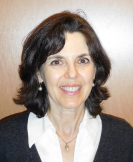AME Department Seminar: Designing New Materials: In-Situ Imaging, Measurements, and Manipulation in the Electron Microscope
Designing New Materials: In-Situ Imaging, Measurements, and Manipulation in the Electron Microscope
Presenter
Eli Sutter
Department of Mechanical and Materials Engineering
University of Nebraska-Lincoln
Abstract
In-situ transmission electron microscopy can be used to follow the behavior and measure the properties of nanostructures over a wide range of environmental conditions with resolution down to the atomic scale. Liquid-cell electron microscopy, for instance, is the only technique that allows direct imaging of nanometer-scale processes in liquids. It has been successfully applied to imaging various processes in liquids, solutions, and colloidal suspensions that were typically investigated ex-situ on samples taken at different process stages, or in some cases in-situ using reciprocal space techniques. Here I will illustrate the power of in-situ liquid-cell electron microscopy imaging to probe complex solution-phase processes in real space. Examples include plasmon-mediated colloidal synthesis of anisotropic nanostructures and the self-assembly of nanocrystal superstructures in solution. Our results demonstrate that real-time electron microscopy can substantially advance our understanding of solution phase processes as a basis for designing materials with tailored functionality. Finally, the high-energy electron beam often represents a probe that can interact strongly with nano-objects. Used judiciously, this property can make it a unique tool for both activating and tracking processes at the nanoscale. I will discuss nanometer-scale measurements of light-matter interactions in 2D semiconductors and plasmonic materials using cathodoluminescence spectroscopy in scanning transmission electron microscopy. Such nano-optical experiments allow us to characterize light emission with spatial resolution far below the diffraction limit, e.g., to measure luminescence from confined geometries (e.g., nanowires, nanoflakes) of layered crystals, progressively changing optoelectronic properties in chiral twisted van der Waals nanowires or probe photonic waveguide modes in van der Waals materials.
Bio Sketch

Eli Sutter is a Professor of Mechanical and Materials Engineering at the University of Nebraska-Lincoln. Before joining the University of Nebraska-Lincoln in June 2015, she spent 12 years as Scientist in the Center for Functional Nanomaterials at Brookhaven National Laboratory. Her research focuses on in-situ transmission electron microscopy of nanomaterials at variable temperatures and in different environments. She has co-authored more than 185 scientific publications and holds 8 US Patents. She received a Scientific American 50 award for Ultra-measurements (2007), the Sapphire Prize (2011) and Battelle Inventor of the Year Award (2015). She served as Chair of the International Conference on Nanoscience and Technology, Vail (CO) in 2014 and the 2017 Materials Research Society Spring Meeting in Phoenix (AZ)
.